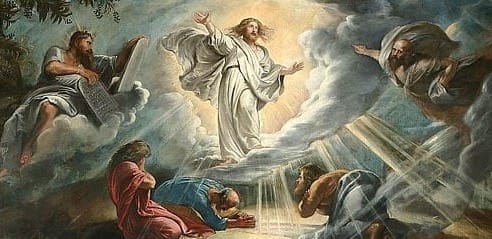“In order to undertake more seriously our journey towards Easter and prepare ourselves to celebrate the Resurrection of the Lord – the most joyous and solemn feast of the entire liturgical year – what could be more appropriate than allowing ourselves to be guided by the Word of God? For this reason, the Church, in the Gospel texts of the Sundays of Lent, leads us to a particularly intense encounter with the Lord, calling us to retrace the steps of Christian initiation: for catechumens, in preparation for receiving the Sacrament of rebirth; for the baptized, in light of the new and decisive steps to be taken in the sequela Christi and a fuller giving of oneself to him.” Benedict XIV, Message for Lent 2011.
Lent is underway and it is a season of fasting. Some give up chocolate; others give up social media; but nobody should give up spiritual reading. Spiritual reading can help you enter into the spirit and discipline of Lent; enrich your prayer and lectio divina; prepare for Holy Week and Easter.
Here, then, are five books that make for good Lenten reading. You can also check out last year’s list and the message of Pope Francis for Lent 2024.
- On Repentance and Almsgiving
by St. John Chrysostom - Encyclical Letter Dives in misericordia (Rich in Mercy)
by St. John Paul II - The Lord
by Romano Guardini - A Father Who Keeps His Promises
by Scott Hahn - The Screwtape Letters
by C.S. Lewis
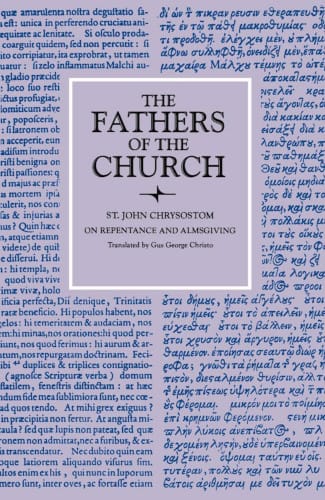
1.
Last year’s proposed patristic reading was St. Cyprian’s Works and Almsgiving (De opere et eleemoysinis). Almsgiving is also at the centre of one of ten homilies by St. John Chrysostom (c. 347-407) which have been collected and translated in On Repentance and Almsgiving.
Nine of the homilies are on repentance (i.e. penance). According to the editor of the volume, John preached them in his native Antioch sometime during 386-387, when still a deacon. In the winter of 387, he preached a homily on almsgiving. It belongs to the same period as the nine on repentance and develops one of their themes. For this reason, it too is included in the volume.
In these ten homilies, Chrysostom covers each of the three exterior works of penance. Two of the homilies focus on almsgiving (3, 10), two others on fasting (5, 6), one on prayer (4). Moreover, his preaching on penance is tied to the homonymous sacrament. These homilies, therefore, are a compendium on the place of penance in a Christian’s life. That makes them especially apt Lenten reading.
“Have you sinned? Enter into the Church and wipe away your sin. The number of times you fall down in the marketplace equals the number of times you rise up. Likewise, as many times as you sin, repent for your sin; do not become discouraged. And if you sin a second time, repent a second time. Do not be completely deprived of the hope for the proposed goods through indolence.”
St. John Chrysostom
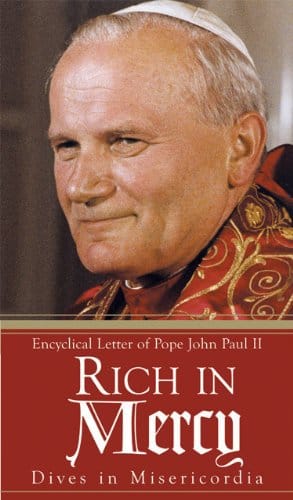
2.
Lent is a time of penance but not for penance’s sake. One of the various biblical terms for penance is ‘conversion’ (metanoia) and, as St. John Paul II taught,
“Conversion to God always consists in discovering His mercy.”
John Paul II makes this observation in his second encyclical, Dives in misericordia (1980). With its profound reflection on “the Father of mercies” (2 Corinthians 1:3) and the Parable of the Prodigal Son, this encyclical is well worth reading during Lent.
It may also be particularly illuminating amid the current climate of heightened factionalism. As the encyclical notes, “mercy becomes an indispensable element for shaping mutual relationships between people.” However,
“The present-day mentality, more perhaps than that of people in the past, seems opposed to a God of mercy, and in fact tends to exclude from life and to remove from the human heart the very idea of mercy.”
Turning to God for his mercy is one part of our Lenten conversion; extending like mercy to those around us is another. However, we will only be capable of doing so if we first encounter “God, who is rich in mercy” (Ephesians 2:4).
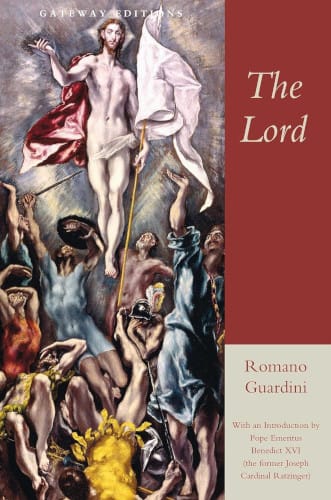
3.
The Gospels proclaimed at the Sunday Masses of Lent narrate several of the key episodes from our Lord’s public life. The lectionary thereby reminds us that Lent is a season for contemplating those mysteries. An excellent aid and guide is Volume I of Benedict XVI’s Jesus of Nazareth. That is why it featured in last year’s list of recommended readings for Lent.
In the foreword to Volume I, Pope Benedict links his Jesus of Nazareth to a series of books by distinguished Catholic authors that were published when he was growing up. Each of these books presented the Life of Jesus.
“When I was growing up—in the 1930s and 1940s—there was a series of inspiring books about Jesus: Karl Adam, Romano Guardini, Franz Michel Willam, Giovanni Papini, and Henri Daniel-Rops were just some of the authors one could name. All of these books based their portrayal of Jesus Christ on the Gospels. They presented him as a man living on earth who, fully human though he was, at the same time brought God to men, the God with whom as Son he was one. Through the man Jesus, then, God was made visible, and hence our eyes were able to behold the perfect man.”
Benedict XVI
One book in particular from this list probably inspired Benedict XVI’s Jesus of Nazareth: Romano Guardini’s The Lord. That is why it is this year's recommended reading.
As a seminarian, Joseph Ratzinger attended some of Guardini’s lectures in Munich. As a cardinal, he not only published a book, The Spirit of the Liturgy, that took its title from Guardini’s homonymous groundbreaking opuscule. He also wrote an introduction to the reissued English edition of Guardini’s The Lord. There he noted how,
“Romano Guardini's book The Lord has helped more than one generation of Christians enter into a deeper relationship with Jesus Christ. When the book first appeared, it offered a new approach to the spiritual interpretation of Scripture.”
and,
“Guardini's book The Lord has not grown old, precisely because it still leads us to that which is essential, to that which is truly real, Jesus Christ Himself. That is why today this book still has a great mission.”
In the Preface, Guardini modestly describes the work as a set of “meditations” drawn from four years’s worth of his Sunday sermons. He thereby provides a key on how to use the book. While it can be read from cover to cover, it can also be used as a collection of meditations. You can simply open it at the page that deals with the Gospel passage upon which you are meditating or that is proclaimed at the Mass of the day.
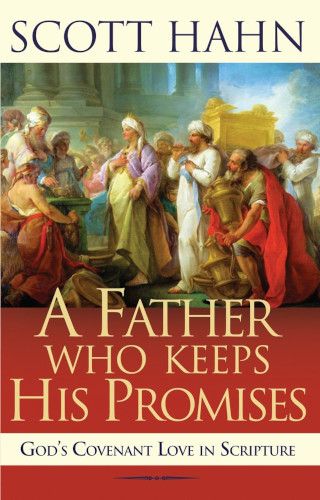
4.
Lent was originally the period of preparation of the catechumens, who would receive Baptism in the Easter liturgy. That preparation for Easter was extended to all the faithful. It became an occasion to convert and renew their baptismal commitments.
One way of reliving the experience of the catechumen is to recall the course of salvation history.
In the early Church, the bishop narrated the central events of salvation history to the catechumens. Specifically, he explained the key moments of the Old Testament and how they were brought to fulfilment in Jesus. This catechetical instruction was called the narratio.
Last year’s list of recommended Lenten readings proposed one resource for reviewing that sort of catechetical instruction: John Bergsma’s Bible Basics for Catholics: A New Picture of Salvation History. It outlines Sacred Scripture’s overarching story. An earlier, more detailed book in this vein, yet a comparably accessible one, is Scott Hahn’s A Father who Keeps His Promises.
It too traces the big story of the Bible by focussing on the six covenants that God makes with man. Five of these take place in the books of the Old Testament: the covenants with Adam, Noah, Abraham, Moses, and David. The sixth is the New Testament made through Christ.
Each of these covenants, Hahn explains, has a specific mediator, role, form, and sign. For example, Adam is the mediator of the first covenant. Marriage is its form and Adam plays the role of husband within it. The New Testament brings all the preceding covenants to fulfilment. It too establishes on a specific form or community: the Church. Jesus mediates as its king and high priest. The Eucharist is the sign or sacrament of this covenant.
By tracing these dynamics within the biblical narrative, Hahn can help us make more sense of the Old Testament readings at Mass during Lent.

5.
At Mass on the first Sunday of Lent, the Gospel recounts Christ’s temptation in the wilderness. Jesus prays and fasts for forty days and nights in the desert, and then overcomes the temptations of enemy. During Lent, we too strive to overcome sin and temptation through forty days of prayer, fasting, and good works. Moreover, the Lord’s manner of dealing with temptation is a model of the discernment of spirits, as Fr. Timothy M. Gallagher OMV pointed out in his interview on the subject.
“You have the two different spirits. This is as clear, definitive, and sharp a discernment you will ever find. The tempter comes. Immediately, the Lord understands who it is. He responds quickly and firmly. The various temptations are over immediately. Then, the angels come to minister to him.”
One of Fr. Gallagher’s recommended books on the discernment of spirits was The Screwtape Letters by C.S. Lewis. This book is an entertaining exploration of the devil’s ploys.
As Fr. Gallagher also noted, one of his acquaintances makes a point of reading The Screwtape Letters once a year to brush up on spiritual discernment.
He is not the only one who reads it once a year. So does Fr. Michael Ward. He admitted to this healthy habit in his interview on C.S. Lewis. Indeed, he tries to read it “especially during Lent.” As he pointed out, Lewis’s humour helps us digest the bitter truths about ourselves and our enemies.
“We laugh at ourselves, not just at the demons, for falling for the stratagems of these of these wicked creatures. In other words, Lewis, as it were, puts a rim of honey around the medicine glass and we swallow the medicine, hardly realising that it is doing us any good. But it is. It does a great deal of good… It’s a very good moral mouthwash—a fantastically spirited book, in every sense of the word.”
We ask the Lord to protect us in our struggle against evil as we begin the discipline of Lent. May this season of repentance bring us the blessing of his forgiveness and the gift of his light.


